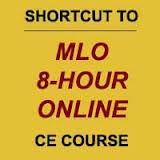
- How Do Reverse Mortgages Work
- Types of Reverse Mortgage Loans
- How Much Money Can You Borrow
- What Can You Do with the Money
- Long Term Care & Reverse Mortgages
- Purchase a Home with a Reverse Mortgage
- Myths About Reverse Mortgages
- Pros and Cons of Reverse Mortgages
- Social Security & Medicare Benefits
- The Reverse Mortgage Loan Proces
Types of Reverse Mortgage
HECM (Home Equity Conversion Mortgage)
* HECM Saver Reverse Mortgage
This lower-cost reverse mortgage requires significantly less in up-front costs as compared to the HECM Standard reverse mortgage. As a result, HECM Saver can save the average homeowner age 62 and older thousands of dollars. The amount of money that can be borrowed is less than with the HECM Standard, but the lower up-front costs may make it an attractive option.
The New HECM Saver option requires an upfront premium of only .01 percent of the home’s value, as compared to the 2-percent requirement for the standard FHA reverse mortgage loan.
Fixed-Rate Home Equity Conversion Mortgage
Lock in an interest rate for the entire life of your loan and take 100% of your funds at closing with a fixed-rate Home Equity Conversion Mortgage (HECM). With this government insured loan, you will always know exactly how much interest is accruing on your reverse mortgageand eliminate any worry that the rate may increase.
Adjustable-Rate Home Equity Conversion Mortgage
The adjustable-rate Home Equity Conversion Mortgage (HECM) is also government insured – but may provide you with greater flexibility, because it generally provides more options for you to receive your reverse mortgage proceeds (e.g., as a line of credit, monthly payment, lump sum, or a combination of these). And the adjustable-rate HECM may be offered at lower interest rates.
Home Equity Conversion Mortgage for Purchase
A Home Equity Conversion Mortgage (HECM) for Purchase helps you purchase a home by taking out a reverse mortgage on that home. It’s applicable for the purchase of a one- to four-family dwelling unit, to be occupied as a principal residence only. It could help you move to a home that will better fit your future needs
Refinancing
One of the most often asked questions about reverse mortgages is: can they be refinanced? The answer is yes. And in fact, refinancing can be a useful option if your home increases in value – making more equity available for you to access. Please note that the appraised value of your home may affect your loan amount.
How much money can I get from my home? Loan Limit: $625,500
The amount you can borrow depends on your age, the current interest rate, and the appraised value of your home.
How You Receive Your Money
- Lump Sum
- Monthly Payments (your choice of loan advances for a specific period, or as long as you live in your home)
- Line of Credit (unscheduled payments or in installments, at times and in amounts of borrower’s choosing until the line of credit is exhausted)
- Any combination you would like of the above three choices
Financing Fees
You can use the money you get from a Reverse Mortgage to pay the various fees that are charged on the loan. This is called “financing” the loan costs. The costs are added to your loan balance, and you pay them back plus interest when the loan is over.
Loan Amounts
The amount of money you can get depends on the specific Reverse Mortgage program you select. It also depends on your age, the value of your home and current interest rates
Debt Payoff
Reverse Mortgages generally must be “first” mortgages, that is, they must be the primary debt against your home. If you now owe any money on your property, you generally must either :
- pay off the old debt with the money you get from a Reverse Mortgage
- or pay off the old debt before you get a reverse mortgage
Most Reverse Mortgage borrowers pay off any home debt with a lump sum advance from their Reverse Mortgage. Credit cards and other unsecured debt is not required to be paid off.
Debt Limit
The debt you owe on a Reverse Mortgage equals all the loan advances you receive (including any you used to finance the loan or to pay off prior debt), plus all the interest that is added to your loan balance. If that amount is less than your home is worth when you pay back the loan, then you (or your estate) keep whatever amount is left over.You can never owe more than what your home is worth at the time the loan is repaid. The lender may not seek repayment from your income, your other assets, or from your heirs.(The technical term for this cap on your debt is a “non-recourse limit.” It means that the lender does not have legal recourse to anything other than your home’s value when seeking repayment of the loan.)
Repayment
All Reverse Mortgages are due and payable when the last surviving borrower dies, sells the home, or permanently moves out of the home. (Typically, a “permanent move” means that neither you nor any other co-borrower has lived in your home for one continuous year.)
Reverse Mortgage lenders can also require repayment at any time if you:
- fail to pay your property taxes;
- fail to maintain and repair your home; or
- fail to keep your home insured.
These are fairly standard “conditions of default” on any mortgage. On a Reverse Mortgage, however, lenders generally have the option to pay for these expenses by reducing your loan advances and using the difference to pay these obligations.





